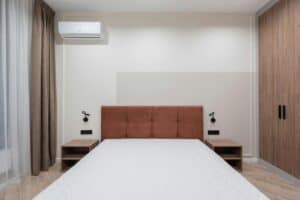Residential air conditioner installation is a critical step in ensuring that your home remains comfortable, especially during the hotter months of the year. This guide aims to provide homeowners with comprehensive insights into the process of air conditioner installation, the importance of professional services, and how to maintain optimum cooling efficiency within your residence.
Understanding Residential Air Conditioning Requirements
The first phase in the installation process involves understanding your specific home cooling needs. Several factors influence the type of air conditioner you may require, including the size of your home, ceiling height, window dimensions, and insulation quality. Each of these elements plays a vital role in determining the cooling capacity, measured in British Thermal Units (BTUs), needed to adequately cool your living space.
Choosing the Right Air Conditioner
Once the cooling requirements are assessed, selecting the right air conditioner is the next pivotal step. There are various models available, from split systems and multi-split systems to ducted air conditioning. Depending on the structure of your house and your specific needs, each system offers unique benefits in terms of energy efficiency, aesthetic appeal, and performance.
The Significance of Professional Installation
Engaging a professional for your residential air conditioner installation cannot be overstated. Trained technicians have the knowledge to handle the complexities of the installation process, which includes accurate placement, secure mounting of indoor and outdoor units, and proper connection of electrical components.
Site Evaluation and Preparation
An initial site evaluation is crucial, as it allows technicians to plan for any challenges that may arise during the installation process. They can determine the optimal location for each component of the air conditioning system, considering factors such as airflow, sun exposure, and aesthetic implications.
Installation of Indoor and Outdoor Units
The placement of the indoor and outdoor units demands careful consideration. Technicians ensure the indoor unit is situated away from heat sources and direct sunlight to maintain efficiency. The outdoor unit needs sufficient clearance for unobstructed air circulation and accessible for maintenance purposes.
Electrical and Ductwork Considerations
Air conditioners require a stable and compatible electrical supply. Technicians will confirm the safety and adequacy of existing electrical connections or recommend upgrades if necessary. Additionally, the installation may involve ductwork adjustments or installations, a task that requires expertise to guarantee a seamlessly operating system.
Ensuring Proper Airflow
Airflow is a key aspect of a well-performing air conditioner. Professionals will install and configure the ductwork to maximise airflow efficiency, which contributes to the uniform distribution of cool air and the overall comfort of your home.
Testing and Commissioning
Post-installation, your air conditioner needs to be thoroughly tested. This includes checking the refrigerant levels, ensuring all connections are secure, and confirming that the thermostat and control systems work as expected. Technicians will typically perform a final walkthrough to verify that the installation meets all safety and operational standards.
Maintenance and Upkeep
Maintaining your air conditioner post-installation is vital for continued efficiency and longevity. Regular cleaning of filters, checking of refrigerant levels, and timely servicing can prevent potential malfunctions and costly repairs.
Professional Servicing and Repair
Arranging for professional servicing at least once a year is recommended to keep your air conditioning system at its best. Trained technicians can diagnose and address issues early, ensuring your air conditioner remains in top condition through the years.
Energy-Efficient Options
Today, energy-efficient air conditioners offer significant long-term savings on utility bills, while also reducing your carbon footprint. Look for systems with high Seasonal Energy Efficiency Ratios (SEER) as these models are designed to provide maximum cooling with minimal energy use.
Smart Controls and Automation
Modern air conditioners come equipped with smart controls and automation features, allowing for easy adjustments and optimisation of cooling schedules. These technological enhancements contribute to improved comfort and energy savings by adapting to your lifestyle and preferences.
Warranty and After-Sales Support
Potential buyers should consider the warranty and after-sales support offered by the manufacturer and installation company. A comprehensive warranty can protect your investment, while reliable after-sales service ensures you have access to professional help whenever required.
Conclusion
Residential air conditioner installation is a complex but essential process for maintaining a comfortable home environment. By choosing the right system, engaging professional technicians, and committing to regular maintenance, you can enjoy efficient and effective cooling for years to come.
Remember that the key to a successful installation begins with seasoned professionals who take pride in delivering quality service. A properly installed and maintained air conditioner not only cools your home but also contributes to the air quality and energy-efficiency of your household.
Invest in your comfort by ensuring a professional and thorough installation process, and reap the benefits of a cool, inviting home even on the warmest of days.

